Sprinkler project
Sprinklers are very cheap and easy way to control the humidity and temperature in the greenhouse.
The idea of cooling down isn’t only the cold water itself, but the effect resulting from the evaporating.
In other words, it cools down the greenhouse for a while before there’s a need for another sprinkler rain.
For smaller greenhouses, you need just one or two sprinklers some hose, a container and a pressure pump.
Chiles really love the extra humidity during the scorching days.
HIGHLY recommended for optimal growth.
Click here for a sprinkler sketch I did for my greenhouse.
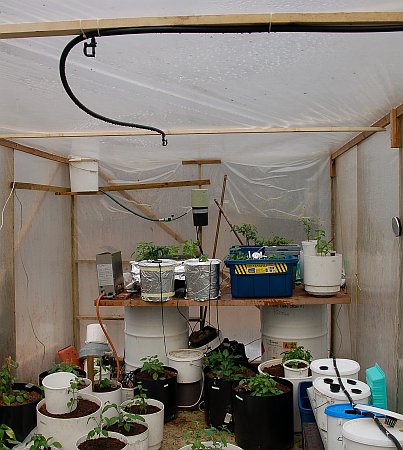
Sprinklers on warm side of the greenhouse.
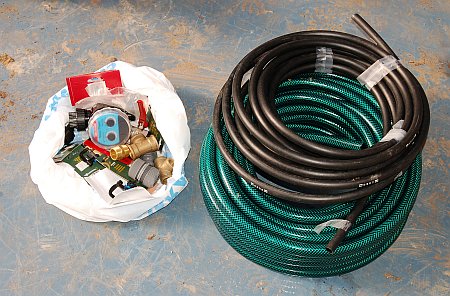
Sprinkler parts.
For smaller system, there’s no need to buy parts as much as in this case.
With smaller a greenhouses and a pressurized water system you can get the sprinkler system with a very low budget.
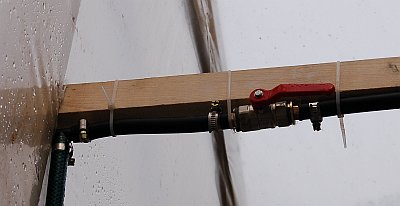
Valve that gives an option to choose the area to sprinkle the cold water.
(Separates the warm and cold side.)
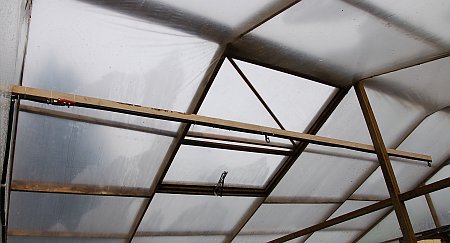
Sprinklers on cold side of the greenhouse.
They’re up high, so they sprinkle the water all around the greenhouse.
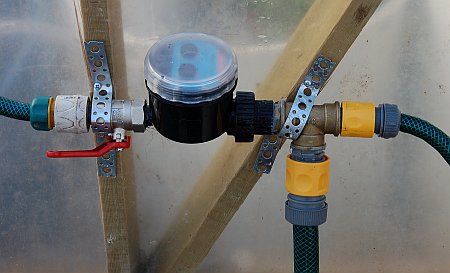
Timer and a valve for adjusting the pressure for the sprinklers.
Most likely I will still add a container where I can add some extra nutrients like Fish Mix and Co2 tablets to boost the growth even more.

A close-up of a sprinkler.
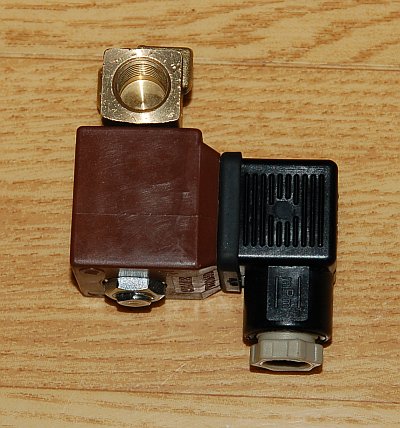
I changed the timer to magnetic valve later to control the relays with the computer.
This lets me use both timers and thermal limits.
As an example, when the temperature reaches 30, the sprinklers will be activated.
And again, when the temperature goes below 30 degrees, the sprinklers will turn off again.
Very efficient and cheap way to cool down the greenhouse.
Too bad the magnetic valves are usually quite expensive, but with most cases a timer is enough… you can get one with less than 10 euros from a gardening store.
As addition, I have dew adjusted for every morning (before the sun rises) to give the plants a little extra moisture every morning (dew).
Also I adjust the rainy days inside the greenhouse according to weather forecasts.
For example, when the day should be very hot, I adjust the sprinklers to sprinkler every hour for a few minutes to keep the humidity high even at the middle of the day.
When it’s cloudy or rainy outside, the sprinklers will be turned off completely as the humidity is high enough already.

Sprinklers (and fans, heaters, pumps and other devices) can be controlled and monitored with a computer or cellular from all around the world with a device like this shown here.
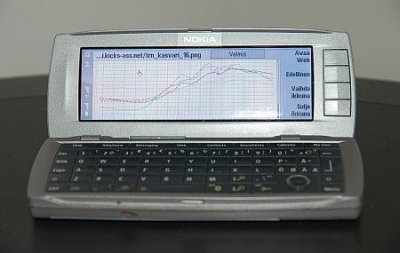
Greenhouse temperatures being monitored.
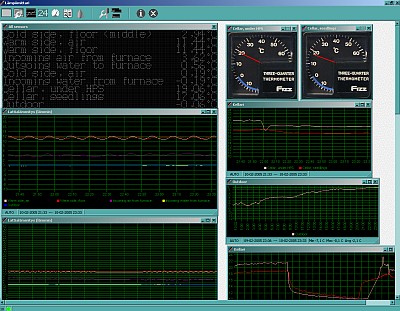
Sensor monitoring software running on my old laptop.
I use the same laptop to control the relays in the greenhouse.
Here’s a link for this great monitoring software.
Registered users can monitor the temperatures in my greenhouse.
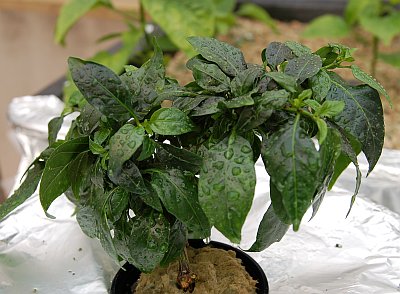
Plant after sprinkler rain.
Every plant in the greenhouse gets a nice mist after every sprinkler run.
Before the sprinklers the sunny days were more like stress for the plants.
Now the plants can enjoy the sun even during the hottest days of the summer.
The latest plan for the sprinkler project is to build and add a fertilizer container which can be used to spray growing additives (like fish mix!) and co2 enriched water to plants.
An easy addition but makes the growing much easier!
The next step after that will be adding second magnetic valve which allows to spray with either fertilizer / co2-water or just water.
Here’s the plan for that:
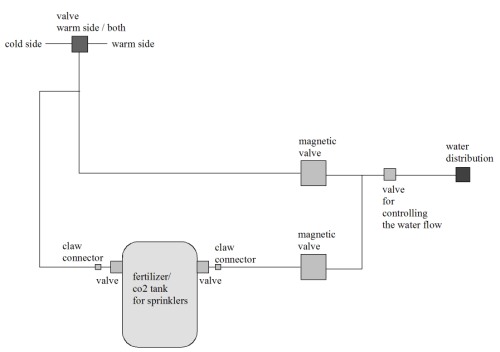
Here’s the overall water plan for the greenhouse & kitchen garden:
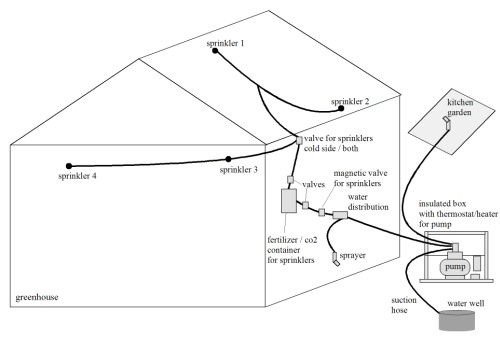
Sprinkler tank implemented:
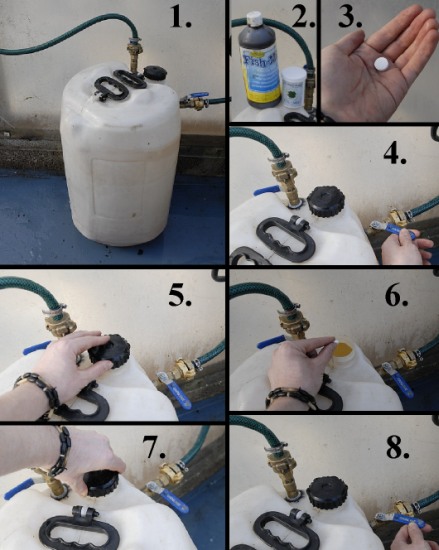
Fertilizing, giving CO2, neem oil, pinetree soap, or just about anything else is very easy with the sprinklers.
Here are the steps.
1. The tank in “standby” -mode
2. Choice of the nutrient(s)
3. In this example I used CO2 tab
4. Both valves need to be turned off
5. Opening the cork
6. Drop in the CO2 tab (or add nutrients or both), the solution will be stirred when needed.
7. Closing the cork
8. Opening the valves
Then short wait is needed, for CO2 to get dissolved.
And then, sprinklers can bee turned on and all the plants in greenhouse / outdoors under the sprinklers can enjoy the nutrient/CO2 -boosted rain! 🙂
